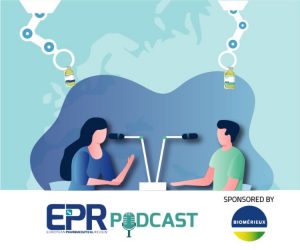
European Pharmaceutical Review podcast
EPR Podcast Episode 5 – ATMP manufacturing and QC – Rey Mali, Accellix and Félix Montero-Julian, bioMérieux

Cell and gene therapies, types of advanced therapy medicinal products (ATMPs), are an exciting emerging class of therapeutics offering potentially huge therapeutic benefit. So far, more than 100 cell and gene therapies have been approved in markets worldwide and many more are under development.
Cell therapies have shown promise in treating diseases such as cancer, where chimeric antigen receptor (CAR) T-cell therapies have already transformed care for haematological malignancies, and gene therapies offer a potentially one-time curative treatment for genetic disorders.
Yet despite their potential, there are challenges facing cell and gene therapies. In this podcast, Rey Mali, Vice President Sales and Marketing, Accellix, and Félix Montero-Julian, Healthcare Scientific Director, bioMérieux discuss the difficulties in manufacturing and ensuring the quality of cell and gene therapies, why speed is particularly important in their quality control and some of the key technologies involved in these quality assessments.
To begin, Félix discussed the three categories of products within cell and gene therapies: in vivo gene therapy, in which viral vectors comprising nucleic acids are used to alter the human genome; cell therapy, which utilises unmodified living cells to treat patients, an example may be a stem cell transplant; and gene modified cell therapy, such as CAR T cells, using cells modified outside of the body to treat patients.

Rey Mali, Vice President Sales and Marketing, Accellix
Rey explained that ATMPs are popular for drug development because they enable the treatment to be tailored to the patient, which is particularly desirable in the treatment of cancer, because other existing therapies, such as chemotherapy, are less specific and as a result have a range of off-target effects which can harm the patient. “The biggest benefit is really providing a personalised treatment that is tailored to the patient and is targeted towards the disease,” explained Rey. Félix added that cell and gene therapies are exciting because there are so many questions yet to be answered surrounding how to enhance their efficacy and manufacturing, leaving a world of discoveries waiting to be made.
When asked what challenges there are in developing and manufacturing ATMPs, Rey explained that there are many: from finding the right target to assessing safety and toxicity and recruiting patients for trials. “We are developing a biological therapy, so that on its own has multiple challenges. We are using tools such as gene editing which 15 years ago were thought of as science fiction, today we are using it to change cells to target a specific ailment,” stated Rey. For manufacturing, which takes on average 18 to 24 days, there are many quality control checkpoints, assessing everything from sterility to potency to cell viability and purity. For CAR-T therapy, for example, said Rey, there is huge complexity in the manufacturing process – taking blood from a patient, finding the target cell type, changing that cell and then growing enough of it to treat the patient. As a result, “being able to offer that to all patients suffering from that ailment is very challenging because the process is lengthy, there are multiple quality checkpoints and it is very, very expansive.”

Félix Montero-Julian, Healthcare Scientific Director, bioMérieux
We also discussed the impact of smaller production volumes on manufacturing, Félix explained: “because the production volumes are lower, we need to minimise how much is taken to do all the QC testing… we want to keep all the materials available to treat the patient.” In addition, he said that the majority of patients treated with cell and gene therapy products are in bad condition as they are typically used as the last line of treatment (third or fifth line), therefore, we want to maximise the volume of product available for treatment and produce them fast enough to meaningfully help the patient. For this reason, time to results with the analytical techniques involved is critical, as is minimising the amount of hands-on manipulation of samples to give a clear picture of product quality.
Rey and Félix also outlined the two key types of critical quality attributes needing to be tested with cell and gene therapies: those that affect safety – the presence of mycoplasma, microbial content and detection of endotoxins – and secondly the cellular quality attributes – cell viability, phenotyping and purity. They added that QC for cell and gene therapies is totally different from QC for even other biopharmaceuticals, such as monoclonal antibodies, because the cells involved are alive. “Every cell from one patient to another may be different,” explained Félix, “so this is challenging to have standardised protocols that can consistently measure [the quality attributes]. We are still discovering how to control these products, what are the best analytical technologies to use and what are the most relevant data… how to use this data to adapt processes.”
We went on to discuss further why speed is crucial in QC, what techniques are currently used for the analysis of quality for cell and gene therapies and how Accellix and bioMérieux are teaming up to bring solutions to market that can reduce the time taken for QC testing from days to hours or minutes. Find out about all of this and more in this podcast, supported by bioMérieux.
Enjoyed this podcast? Let us know in the comments and look out for European Pharmaceutical Review’s next episode, coming soon!
The post <em>EPR</em> Podcast Episode 5 – ATMP manufacturing and QC – Rey Mali, Accellix and Félix Montero-Julian, bioMérieux appeared first on European Pharmaceutical Review.